
to Hive being
welcome
What is Hive Being, and Why the Name?
You have likely heard talk of a hive mind, where one global mind finds more or less figurative expression in various local minds. Such talk is common enough in nature documentaries, especially ones concerning ants or bees, and in sci-fi programs. Take that notion, at least a loose version of it, and broaden its scope. That will be a decent first step in understanding the title I have chosen both for my Blog and for the first five-volume installment of my magnum opus Made For You and Me, a fragmentary collection of minimalist stanzas from 2016 to 2020.
In alignment with Spinoza (the 17th Century Rationalist to whom I devoted my doctoral studies), I view reality in its totality as a grand hive Being: all entities are but pulsating manifestations of the buckstopping fount of everything, an ultimate being we might call “God” or “Nature” (so long as, out of respect for the capital “G” and the capital “N,” we limit it neither to some anthropomorphic cloud father hurling lightning bolts nor to mere wilderness untouched by human smog). According to the hive-Being view (where reality is one lone superorganism, a monistic—and we might even say unividualist—conception I defend in both my creative and academic capacities), each non-foundational being (each being, that is, whose essence does not involve existence) is an utterly necessitated expression or eruption or exudation of this eternal source—each is, perhaps better put, a mode or manner of being, and so a focal point through which is disclosed, what classical theists sometimes call “being itself” (ipsum esse subsistens): the realness of the real, the being of whatever may be, the sheer activity of being, the very isness of whatever is. This Blog, which duplicates my Substack, throbs as but one among many literary unfurlings of this self-necessitated foundation, this supreme wellspring, of which we—like black holes and broken beliefs, like fractal ferns and flickering flames—are the inevitable stylings.
My Journey
I am an academic who found himself pressured into early retirement by the rising tides of cancel culture. The illiberal scourge of censoring, silencing, and shaming—although always with us throughout our evolution—reached a local peak around 2021. That was the turbulent year my creative pursuits, which the old left once encouraged as a healthy outlet for the stresses of a childhood steeped in poverty and illiteracy, drew the ire of the new safe-space left. A small cadre of self-proclaimed victims and their allies, several of whom continue to berate me years later under pseudonyms as see through as their sexual infatuation, sought to erase me and my heterodoxy. They found support from a wannabe-woke dean, covered in the grand inquisitor robes of our decadent modernity (full-body tattoos) and just itching to signal his commitment to protecting “vulnerable populations” from triggering material (even if just, as it was in my case, off-duty poems “unbecoming for someone calling himself a teacher”). Although I eventually won my due-process case with the help of The Foundation for Individual Rights and Expression, I slunk away from a college that turned its back on protecting freedom of expression and from an institution increasingly intolerant of intellectual diversity.
The wrecking ball to my too-comfy office in the windowless ivory tower came with a silver lining. From the ashes of my professional aspirations rose a phoenix of increased freedom to fulfill the literary calling I have pursued for decades. Reputation concerns never stopped me, even within academia’s sterile halls of conformity. Indeed, my unapologetic defiance, which has long baffled friends and family, no doubt chummed even safe waters—almost as if I were asking for it all along—until the cancel shiver grew too frenzied to hold back its blind thrashings. But now, now I piston the most forbidden territories of human thought with no longer even a twinge of conscience. The newfound freedom means extra time to hone my craft. When not assisting special-needs communities (a day job far more rewarding than freeway-flyer drudgeries), I pursue my literary mission with Dionysian fervor.
Call for Co-Conspirators
This space, my digital sanctuary, showcases the fruits of my mission. Think of my posts, even those linking to my publications, as works in progress. I want your input, unflinching brutality included. Each post begins with an invitation to action: “Let’s workshop this [draft about x, y, z].” Your contributions, whether through public comments or my contact page, help hammer scraps of ore into polished blades fit for magazine publication.
Your input is valuable, even if you are neither a writer nor a reader of literature—twin disciplines dying by the cyber nanosecond. Sometimes—even if at the risk of uttering banalities—an outsider’s fresh vantage can pierce the veils of convention to reveal what insiders miss. It often takes an outsider to make us even think to question our ingrained presuppositions and attitudes. I stand by the hygienic value of contagion. That is one reason I advocate so strongly for intellectual diversity and freedom of expression. And that is also one reason I was so harrowed by the anti-diversity swell of cancel culture in academia (an institution that should be the utmost caretaker of such values)—harrowed especially insofar as that swell masqueraded under the gaslighting guise of “diversity”).
You will witness the breathing evolution of my writings over time. To track these changes, I label each revision by round: “ROUND 2,” ROUND 3,” and so forth. Each piece undergoes continuous refinement based on your feedback and my own revisitations. Sometimes changes will mar the work. That is the risk of creative tinkering as a finite creature. I hope you will alert me to missteps. After many semesters of university writing workshops, one rule has impressed itself upon me: when someone senses a flaw, something almost always needs to change—even if, yes, the proposed solution misses the mark (which often it does). From a quick look into the archives, accessible here, you can see how much I have benefited from your feedback so far.
My Hope
Sharing drafts can be daunting. But showing you the ravaged and unperfumed real deal unfiltered by makeup (stuttering starts and falsities, awkward line breaks and clumsy word choices, grammatical errors and misspellings)—that not only makes my work more relatable, but helps me refine things through your input. I hope the unfiltered look at the raw process of fumbling, rather than just the polished product, also helps other writers develop their craft. Imperfect works often instruct more than perfect ones: whereas the perfect ones tend to have a grace by which they slip inside us without activating our scrutiny, the imperfect ones—especially the near perfect ones—show us glaringly what not to do.
People laugh at me, seeing—in my tilting at the windmills of literary excellence—a Don Quixote clunking around in Arthurian armor in a post-knight era. I am not naïve. I am well aware of the diminishing ability to read, let alone well: slowly and deeply, with gratitude. I am also aware that my style, which often nests subpoints within larger points, never waters down virtuosity for the sake of mass appeal. I watch readers stumble over my sentences, unable to unlock even just the music of the envelope let alone the semantic meat within, which—given my tendency to flashlight through the darker facets of human nature (the addicts, the miscreants, the abusers among us)—only adds an additional alienating layer of difficulty). Beholding these depressive scenes of even supportive family members getting bucked off my syntactic bronco makes me feel like a dinosaur who should get a hint and, if not succumb to the brain rot of skibidi-toilet speak, just hang himself already. Even though the decline in linguistic background and grammatical voltage makes my compositions seem quixotic in a world binging Netflix and TikTok, I persist—raging against the dying of the light—by some internal compulsion to celebrate the richness of language and thought.
My hope is that, despite social media’s unparalleled power to farm our attention, people never forget the unique power of writing. Beyond unveiling hypocrisy, teasing out complex implications, and detailing the commonalities between even the most alien phenomena, writing offers something we need today—trapped in agoraphobic cyber bubbles only thickened by the Lyme dangers of forests and the COVID dangers of cities—perhaps more than ever. Granting us rich access to the first-person perspectives of others (to how things feel to them), writing serves as one of humanity’s best tools for combating loneliness. It allows us to linger, broadly and deeply and at high resolution, within the inner lives of others in a way that other arts can only suggest.
What to Expect
My work spans a broad spectrum: from metaphysical discourses on free will and determinism and the ontology of holes to the ephemera of western culture (whether the childhood impacts of the hypersexual mono-image of black woman as squirting twerkers or Terrence Howard’s sham revolution of mathematics). Some tight and minimal, others free-flowing sprawls; some heady and abstract, others emotional and imagistic—my inkwell musings, which often blend scholarly rigor with a dark humor from both high and low culture, aim to capture the visceral intensity of our personal and social and ultimately existential predicaments.
By no means can I deny that drug abuse, sexual assault, and the tales of the broken and the damned loom large in the tag cloud of my work. My writing will never be a paradise of easy truths and comforting lies. It will challenge you, provoke you, and at times even repulse you. I offer no apologies for the monsters I unleash. They are as much a part of us, at long root scared rodent mammals scurrying in the shadows of dinosaurs, as our noblest aspirations.
But make no mistake. It is not all downer darkness. The archives are my receipts. You will find pieces exploring the pursuit of authenticity in a media-saturated world, the search for meaning in an indifferent cosmos, and the celebration of beauty in both the sublime and the profane. I locate much of my inspiration, in fact, in novelists like Dostoevsky and poets like Ted Kooser—writers unafraid to pursue moral agendas or risk Hallmark sentimentality in an age that often sneers at sincerity.
Be they satirical dissections of modern social dynamics or poignant poems about addiction or academic articles on moral responsibility, my goal is to provoke thought, evoke emotion, and foster meaningful dialogue. Fear has not and will not stop me from challenging humanity’s fundamental taboos (like bestiality and cannibalism) or self-reflecting into the dark chaos of the subconscious, even if that means exposing the Jungian shadows—the inner Goebbels—lurking within us all!
Expect posts each day, no day missed. Donations are welcome, but I impose no paywall: it feels wrong to charge for art, especially given our date with obliteration. Feel free to explore what amounts to, at the time of writing this, close to a thousand pieces of poetry and prose here. That should give you a sense of what awaits.
Join me—specula holstered—on this literary odyssey into the public and private nooks of the hive Being. Let us navigate the labyrinth of creation together, confronting our demons and even slaying our darlings if we must. Let us dance on the razor’s edge between the sublime and the profane in pursuit of an elusive literary perfection never to be confused—as it has been confused in our declining civilization—with the pursuit of popularity or likeability over truth.
tag cloud
- poetry
- literature
- literature community
- poem
- literary
- American literature
- writing
- creative writing
- poetry community
- Michael Istvan
- Istvan
- perception
- defiance
- suffering
- existential poetry
- dissociative
- poet
- existential
- healing
- human
- adolescence
- sex
- power
- art
- artist
- campus warrior
- Nietzsche
- substance abuse
- mortality
- evolution
- sensual
- death
- Earth
- darwin
- resilience
- God
- hardship
- anxiety
- love
- parenthood
- Life affirming
- murder
- meditation
- sexuality
- prison
- parenting
- disease
- crack
- love letters
- vines
- christianity
- teen
- junkies
- religion
- faith
- rape
- hoodlum
- taboo
- worship
- thugs
- Biggie
- islam
- hypocrisy
- woke
- muslims
- dysmorphia
- babies
- abuse
- pound town
- feet
- baby feet
- care
- cops
- hypermasculine
- olympics
- blm
- horse
- dread
- poison
- transgressive
- mental health
- homosexual
- gymnastics
- fatherhood
- father
- psychoanalysis
- repression
- drugs
- social justice warrior
- teacher
- philosophy
- music
- artistry
- teens
- suicide
- poor
- disturbing
- change
- poverty
- cocaigne
Posts

With Her Jaw Still Wired Shut
With Her Jaw Still Wired Shut presents a psychologically rich and unsettling exploration of power, predation, and familial misunderstanding. At its core, the poem delves into the tragic dynamics of a mother-son relationship, where maternal intuition collides with darker instincts within her son. The title itself, invoking the image of a jaw wired shut, suggests the aftermath of violence or trauma, perhaps even a long-standing silence or inability to communicate openly. This physical restraint may symbolize both the literal inability to speak and the figurative suppression of the truths lying beneath the surface of their relationship.
The poem begins with the mother’s belief that she has detected a crack in her son’s seemingly impenetrable facade—a “don’t-fuck-with-me slouch.” Her intuition, however, is guided by a wishful radar, hinting at her desire to connect with him emotionally, despite the warning signs. This "radar" suggests a heightened maternal sensitivity, attuned to her son's emotional needs, but here it is tragically misguided. She perceives the possibility of vulnerability in her son, a need for care that compels her to move closer, attempting to bridge the gap between them.
However, her approach—driven by love and concern—proves to be fatal in more ways than one. The moment of violence, when "a pen pierced her temple as she leaned in," represents not only a literal attack but also a symbolic rebuff of her emotional overture. The pen, typically an instrument of communication, becomes a weapon that severs rather than connects. This act of violence is a rejection of her attempt to provide comfort or contact. The son's reaction reveals a deeper, darker truth about his internal world—one where predatory instincts take precedence over vulnerability or emotional connection. The use of the pen also symbolizes the son's attempt to write his own narrative of control, with violence as the ink that marks his boundary.
The metaphor of the "sated-lion warmth" within the son is crucial to understanding the predator-prey dynamic at play. While the mother’s instinct was to provide nurture and empathy, the son’s inner state is aligned with that of a predator who has successfully made his kill. The "purring" warmth inside him is not one of relief or comfort but of satisfaction from having asserted his dominance. This predatory satisfaction suggests that he has achieved a kind of victory, having neutralized what he perceives as a threat—his mother's emotional closeness. The use of animal imagery reinforces this dynamic: the son as a lion, sated after a kill, and the mother as prey who has misjudged her place in this primal hierarchy.
The tragic irony of the poem lies in the mother’s conviction that she was "correct" in her intuition about her son’s emotional needs. She is indeed correct in sensing that he needed something, but what he required was not the emotional comfort she sought to provide. Rather, he needed the assertion of his predatory instincts, a reestablishment of control, and the satisfaction of his darker, more violent impulses. The poem’s final lines, where the mother’s inability to feel "that sated-lion warmth" blinds her to the true nature of their exchange, underscores the tragedy. She is correct in one sense, but she has failed to recognize the full complexity of his emotional state, particularly the dangerous undercurrents of his predatory desires.
The poem explores themes of violence, miscommunication, and the darker instincts that can lie beneath familial relationships. The mother’s compassion and desire for emotional connection are pitted against the son’s need for control, which manifests through violence. This tension between nurture and dominance, between maternal care and predatory assertion, forms the crux of the poem. In its final analysis, With Her Jaw Still Wired Shut serves as a meditation on the ways in which familial love can be tragically misdirected, especially when darker, unspoken needs and instincts are at play. The poem’s exploration of power dynamics within the family highlights the painful reality that not all emotional needs are met with compassion—sometimes, they are met with violence.
predatory instincts, familial violence, mother-son relationship, power dynamics, miscommunication, maternal compassion, emotional dominance, predator-prey dynamic, animal imagery, tragedy of misreading, familial conflict.

The Jerkiest Waltzes Still Follow Protocol?
Michael Anthony Istvan Jr.'s poem "The Jerkiest Waltzes Still Follow Protocol" critiques the bureaucratic and impersonal nature of institutional support systems. Through vivid imagery and metaphor, Istvan questions the authenticity of roles typically seen as societal lifelines, such as teachers, nurses, and priests. These figures, described as "sanctioned lifelines," appear overly regulated and detached from genuine human connection, encapsulated in the phrase "coiled in red tape."
Istvan employs the metaphor of these roles as "scripted NPCs" to emphasize their lack of spontaneity and genuine interaction. Non-playable characters (NPCs) in video games follow predetermined scripts, and by likening societal lifelines to NPCs, Istvan underscores the mechanical and impersonal nature of these roles. This comparison highlights the systemic issues within these institutions, suggesting that the individuals within them are constrained by protocols that strip away their authenticity and ability to provide real support.
The poem delves deeper into the human condition, suggesting that this scripted existence is a universal plight. The lines "too much maybe / like all of us flung, / full of encoded drives, / into this game" reflect a deterministic view of life, where individuals operate within the confines of pre-existing conditions and societal expectations. This perspective aligns with Istvan's broader philosophical themes, exploring the tension between free will and determinism.
The concluding lines emphasize the personal impact of this institutional detachment. The inability of these lifelines to serve as "authentic / beacons to turn to" leaves individuals, especially those in need of support, without reliable sources of guidance and comfort. Istvan's poem ultimately calls for a more genuine and empathetic approach to roles that are meant to provide care and support, challenging the reader to reflect on the limitations imposed by rigid structures and the need for authentic human connection.
Keywords:
Michael Anthony Istvan Jr., institutional critique, societal lifelines, teachers, nurses, priests, scripted NPCs, bureaucratic detachment, human connection, deterministic existence, philosophical poetry, critique of institutions, empathy, authentic support, poetry analysis.

Kaminazi
**Kaminazi** is a powerful and provocative poem that addresses themes of racial injustice, hypocrisy, and the selective application of historical guilt in American society. The poem challenges the reader to consider the double standards present in how different racial and ethnic groups are treated, particularly in academic settings.
The poem begins by asserting that America, referred to as "Amerikkka" to emphasize its systemic racism, is deeply anti-black. It suggests that if this were not the case, Asian Americans might face similar historical bullying as white Americans do for slavery, specifically being blamed for Pearl Harbor. This comparison highlights the selective way in which historical guilt is assigned and perpetuated.
The poem also critiques the performative activism often seen on college campuses and in liberal, "sanctuary" cities. The term "keffiyah wokes" likely refers to those who adopt symbols of resistance without fully engaging in meaningful activism. The imagery of "baby-bottle-shot abortion jamborees" suggests a superficial and sensationalized approach to serious issues, contrasting with the genuine struggles faced by marginalized groups.
Overall, **Kaminazi** is a scathing commentary on racial hypocrisy and the uneven distribution of historical blame, urging readers to reflect on the deeper societal injustices and the performative nature of some modern activism. It critiques the selective moral outrage and absurdity in American society. It draws parallels between the baseless accusations faced by minority groups, imagining a world where Korean kids are blamed for Pearl Harbor. This poem highlights the hypocrisy and injustice prevalent on campuses and in progressive spaces, shedding light on the nuanced struggles of marginalized communities.

Morse Code of Distress
Morse Code of Distress is a concise, evocative poem that captures the turmoil and desperation of a young boy. It highlights his compulsive need to scrape a concealed weapon against the rough textures of the urban environment. This act, set against the twilight backdrop, symbolizes his search for a decisive action that could end his life, a life from which he feels trapped and unable to escape on his own. The poem powerfully conveys themes of distress, compulsion, and the silent cries for help through the boy's actions.

White Supremacy on Its Deathbed
"White Supremacy on Its Deathbed" is a bold and confrontational work that challenges the mainstream antiracist movement and its implications for black empowerment. Through a mix of lyrical prose, scholarly critique, satire, and polemic, the author seeks to expose the paradoxical harms inflicted by well-intentioned but misguided efforts to dismantle white supremacy.
The book argues that the contemporary antiracist movement, exemplified by figures like Robin DiAngelo and Ibram X. Kendi, promotes an ideology that, while purporting to empower black Americans, ultimately infantilizes and debilitates them. This movement, according to the author, fosters a narrative of perpetual victimhood and helplessness among black people, which reinforces negative stereotypes and undermines genuine progress. By insisting on the omnipresence of white supremacy in every aspect of society—from everyday interactions to cultural and intellectual achievements—the antiracist movement inadvertently perpetuates the very divisions it seeks to eliminate.
The author critiques the tendency to attribute all disparities in health, education, and crime to systemic racism, while dismissing the role of personal responsibility and cultural factors. This approach, the book contends, not only demoralizes black individuals by suggesting that their fate is entirely dictated by external forces but also fuels racial tensions by framing white people as inherently oppressive and black people as inherently oppressed.
One of the central theses is that the antiracist movement's focus on symbolic gestures and emotional catharsis, rather than practical solutions, fails to address the root causes of inequality. The book criticizes the movement for promoting a form of racial essentialism that mirrors the very racism it opposes, creating racial affinity groups and encouraging a hyper-awareness of racial identity that can lead to further segregation and mistrust.
The book also delves into the economic and social incentives that drive the racism-training industry. It argues that this industry profits from sensationalizing race issues and fostering a culture of fear and division, thereby ensuring a constant demand for its services. The author suggests that this dynamic not only distracts from substantive policy discussions but also perpetuates a cycle of dependency and resentment.
Throughout the book, the author uses a combination of personal anecdotes, historical analysis, and cultural critique to make the case that the current approach to antiracism is counterproductive. By portraying black Americans as fragile and in need of constant protection, the movement undermines their agency and dignity. The author advocates for a shift towards a more empowering narrative that emphasizes resilience, personal responsibility, and a commitment to universal principles of merit and equality.
In essence, "White Supremacy on Its Deathbed" challenges readers to reconsider the dominant narratives around race and to recognize the complex, often unintended consequences of well-meaning but ultimately flawed antiracist strategies. It calls for a more nuanced and constructive approach to addressing racial disparities, one that respects the individuality and capability of black Americans while fostering genuine dialogue and understanding across racial lines.
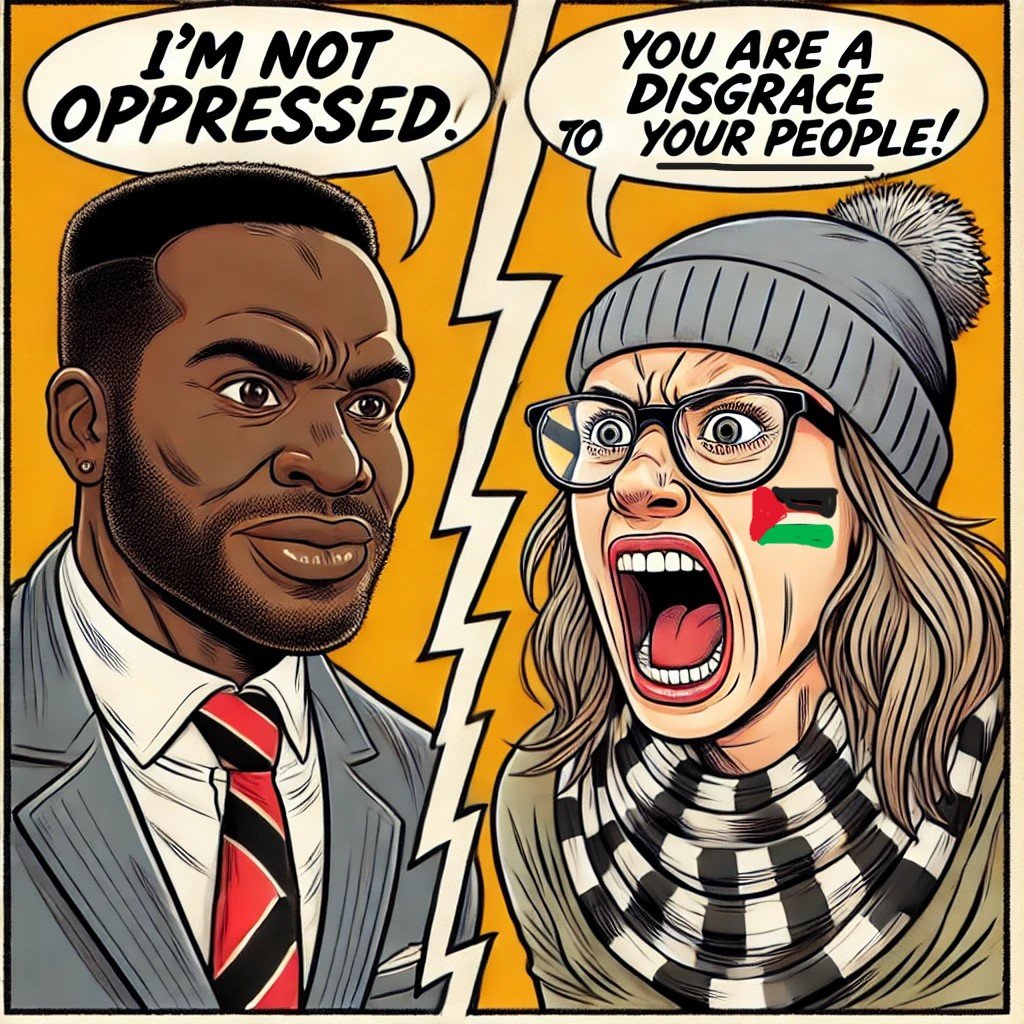
The Help
**The Help** delves into the performative solidarity and the underlying self-serving motivations of a group of white women as they navigate their own feelings of guilt and privilege. Set against the backdrop of a watch-party for the film *The Help*, the poem exposes the superficial and often condescending nature of their attempts to connect with and understand the struggles of people of color.
The scene opens with the women gathered, equipped with box rosé, scarves, and tears—a tableau of desperate solidarity. They are eager to absolve their shame and prove their subservience, glancing nervously at their token person of color. This individual, cornered before the film begins, becomes the focus of their awkward attempts at connection. Each woman, in her way, seeks to express her perceived enlightenment and distance herself from the racism of her own circle, whether by criticizing white features, expressing fear of white men (including their own husbands), or showcasing their tokenistic connections to black individuals.
Their conversation brims with self-congratulatory remarks and superficial praises, particularly directed at the actresses of the film. They fawn over Octavia Spencer's beauty, marveling at her skin, and maintain a facade of reverence and reflection, giving the floor to the "oppressed voice" only after the credits roll. This restraint is insufferable for the inebriated group, who are impatient to express their well-meaning yet condescending pity.
As the poem progresses, it becomes clear that their concern for "people of color" is tainted by their desire to be seen as saviors. They believe it is their duty to educate and uplift, yet their efforts are steeped in a patronizing attitude that fails to recognize the agency and resilience of those they claim to support. Their discussions reveal a disconnect between their self-image and the reality of their impact, highlighting a persistent, albeit well-intentioned, form of racism.
**The Help** critiques the performative nature of allyship and the superficial efforts of those who, while professing solidarity, perpetuate a dynamic of dependency and condescension. Through its vivid portrayal of a watch-party, the poem underscores the complexity and often problematic aspects of modern-day attempts at racial reconciliation.

Docking
"Docking," a poem brimming with raw intimacy, offers a glimpse into a pivotal moment of sexual exploration between two young boys, Mark and Dodi. Through evocative imagery and a deliberate use of language, the poem delves into themes of budding sexuality, power dynamics, and the vulnerability of self-discovery.
The poem opens with a direct and provocative image: "Mark peels open and pulls back the tan prepuce." This act of unveiling sets the stage for the poem's exploration of the body as a source of both fascination and trepidation. The word "bewitched" applied to Dodi suggests a long-held, almost mystical, attraction to this hidden part of Mark's anatomy, possibly stemming from a childhood encounter in the "first school shower." This detail hints at the early awakening of their sexuality and the formative impact of shared experiences.
The language used to describe the exposed genitals is both sensuous and precise. The "chiseled peach-cleft underbelly" and "glossy rose-madder glans" create a vivid picture, while the color choices evoke a sense of youthful vibrancy. However, the focus on Mark's body positions him as the one offering, while Dodi assumes the role of the recipient. This initial power dynamic is further emphasized by the verb "plants" used to describe Dodi's action.
The imagery shifts when the focus moves to Dodi. The "meatus smooching flared ruff of flesh" emphasizes the physical act, while the act of "hooding" Mark's hand "full over Dodi's crown" introduces a reversal of roles. This suggests a potential fluidity and shared agency in their exploration.
The poem's central metaphor, "one retractable rod," highlights the physical connection forged by the boys. However, the act of "shafting" carried out with "strong but slight back and forth" movement underscores the tentative and perhaps even hesitant nature of their encounter.
The final line, "Mark's hand-clutch at the seam secures," reinforces the initial power dynamic. Mark's hand becomes an anchoring force, suggesting a need for control or perhaps a fear of losing this newly discovered connection.
"Docking" raises important questions about the complex interplay of power and intimacy in youthful sexual exploration. The poem avoids explicitness, instead relying on suggestive language and imagery. This ambiguity allows the reader to project their own interpretations onto the scene, fostering a sense of both intimacy and voyeurism.
Ultimately, "Docking" offers a compelling snapshot of a pivotal moment in the lives of these two boys. Their exploration is both physically intimate and emotionally charged, hinting at the complexities of self-discovery and the evolving nature of power dynamics in early relationships.
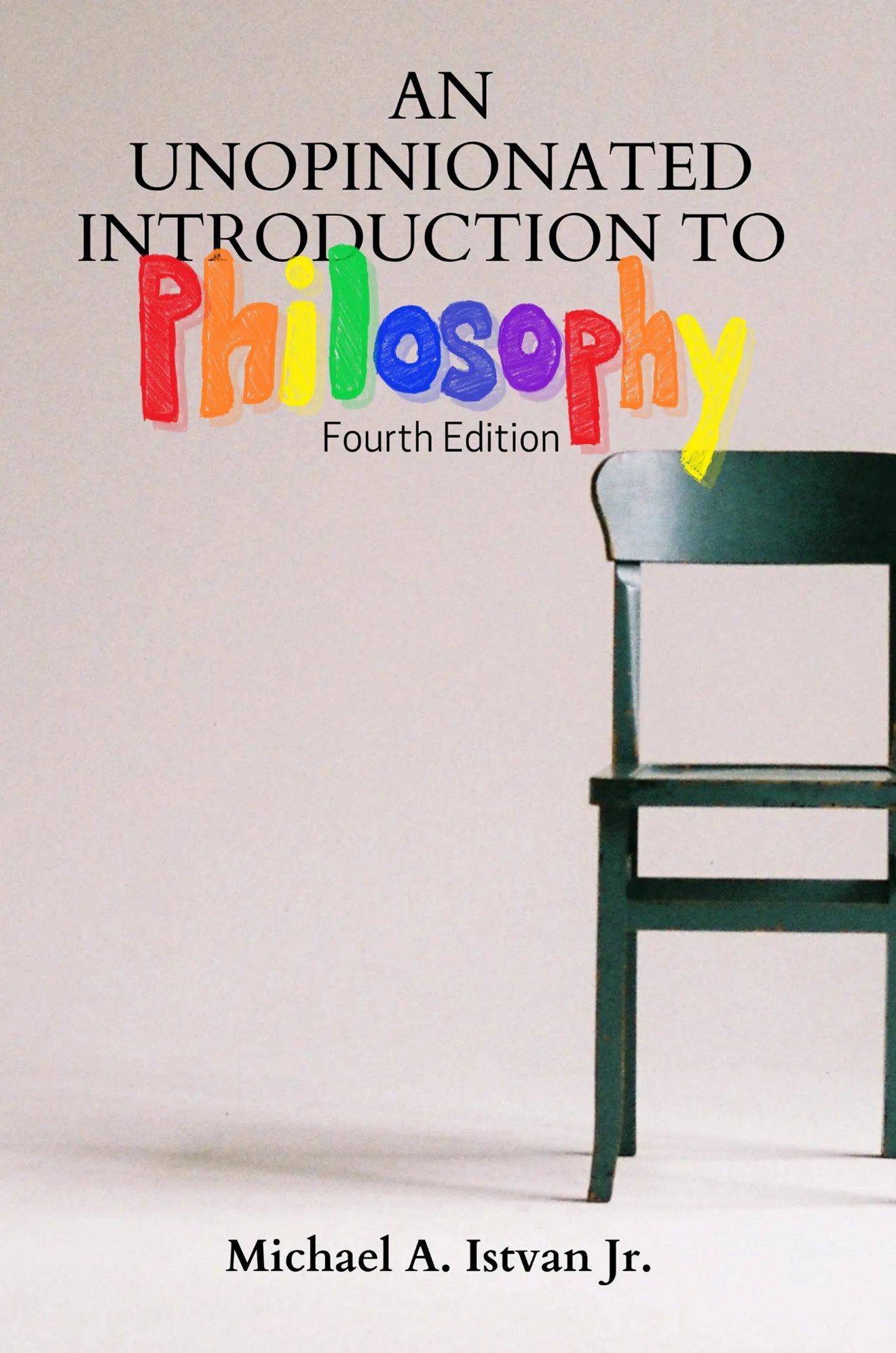
An Unopinionated Introduction to Philosophy (Fourth Edition)
"An Unopinionated Introduction to Philosophy" is a groundbreaking textbook designed to cater to the diverse sensitivities and needs of modern students. Celebrated for its pro-student approach, the book seeks to eliminate potential triggers and discomforts that have historically plagued the academic environment.
The textbook, praised for being exceptionally reader-friendly, is seen as a triumph in creating a truly inclusive and protective educational resource. It addresses the historical issue of selective protection in academia, ensuring that all students, regardless of their unique triggers, are shielded from potentially distressing content. Dr. Istvan, the author, emphasizes the necessity of moving beyond exclusionary practices and ensuring comprehensive protection for every student.
One of the central themes of the book is its commitment to removing all forms of distressing content, rather than merely labeling it with trigger warnings. This approach acknowledges the complexity and individuality of student triggers, advocating for a learning environment free from any form of discomfort. The book's inclusion of a bonus chapter on reporting professors highlights its dedication to empowering students to take action against perceived academic injustices.
The book's critics, however, argue that it undercuts traditional academic rigor by prioritizing student comfort over exposure to challenging ideas. Nonetheless, it has received widespread acclaim for its revolutionary approach to education, which places the emotional well-being of students at the forefront.
"An Unopinionated Introduction to Philosophy" also tackles the issue of macro-aggressions, recognizing that even seemingly minor aggressions can have significant impacts on students. By removing potentially harmful content and providing tools for students to report offensive material, the book aims to create a safe and supportive learning environment.
The textbook's success is attributed to its ability to balance the need for academic content with the imperative to protect students from harm. Its innovative approach has been likened to padding the corners of tables to prevent injuries—essentially, it removes the tables altogether to ensure complete safety.
In summary, "An Unopinionated Introduction to Philosophy" represents a significant shift in educational philosophy. It challenges the traditional notion that students must be exposed to uncomfortable ideas to foster learning and growth. Instead, it champions a model of education that prioritizes student safety and comfort, ensuring that all students can engage with philosophical concepts without fear of distress. This book is a testament to the evolving landscape of academia, where inclusivity and protection are paramount.

Istvan Creative Writing Bios
The reader should know, however, that some biographical information regarding early-childhood development might prove relevant here. Istvan grew up in a time and place where most of the people closest to him had something special going for them, a trump card—constantly leaned upon, constantly providing succor, constantly manifested in their swagger, constantly verbalized as an unconscious soothing mechanism to stoke endorphins of gratitude (healing even in the toughest times): the fact that, to cite the slogan so often used in moments grave and gay, “at least I’m not white.”

In That Way
**In That Way** is a vivid, poignant exploration of the fleeting moments of normalcy and hope experienced by a family grappling with addiction. The poem juxtaposes the harsh realities of drug use with the fragile hope of recovery, using powerful imagery and layered symbolism.
The opening lines set a stark scene: "Close to an 8-ball cut into one mother rail / on the jacket of Skynyrd’s Street Survivors / (frayed and faded by a dead father’s life)." The 8-ball, a slang term for a measure of cocaine, introduces the pervasive presence of drugs. The reference to Skynyrd's *Street Survivors* album, particularly one worn and "frayed and faded by a dead father’s life," suggests a legacy of hardship and loss. This album choice is significant; *Street Survivors* was released just days before the band's tragic plane crash, infusing the poem with a sense of foreboding and the shadow of past trauma.
The phrase "in that thinning sliver before / tunnel vision cloisters them again" captures the transient clarity before the drugs' effects take hold. The "kitchen glow" symbolizes a brief return to the familial and familiar, where the boys, "conjoined by mistrust of solo-detour sniffs," hint at the communal nature of their addiction, bound together by both camaraderie and suspicion.
The "Blackhole pupils" are a striking metaphor for the emptiness and allure of drug use, where the "fool’s gold" represents the false promises and illusory rewards of their addiction. Yet, despite this, "the boys sparkle in that way that fills Mom," suggesting that even in their altered state, there remains a glimmer of their former selves that brings fleeting comfort to their mother.
Mom's actions, "stirring a big pot of what they will not eat," underscore the futility and heartbreak of her efforts to care for them, juxtaposed with the boys’ "frenetic voltage," an image conveying both their hyperactive state and the electric, unstable energy they exude.
The final lines evoke a wistful hope: "where there is talk, daylight / talk, of sports and crushes, school and jobs; / talk, as seasons turn, of kicking the habit." This "daylight talk" contrasts sharply with the darkness of their addiction, reflecting ordinary aspirations and the cyclical nature of their lives. The reference to "seasons turn" suggests the passage of time and the recurring hope for change and recovery, even as the reality remains fraught with difficulty.
In sum, **In That Way** captures the complex interplay of despair and hope within a family affected by addiction. It highlights the moments of human connection and normalcy that persist despite the overarching shadow of drug use, offering a nuanced portrayal of the struggle for recovery and the enduring, if fragile, bonds of family.
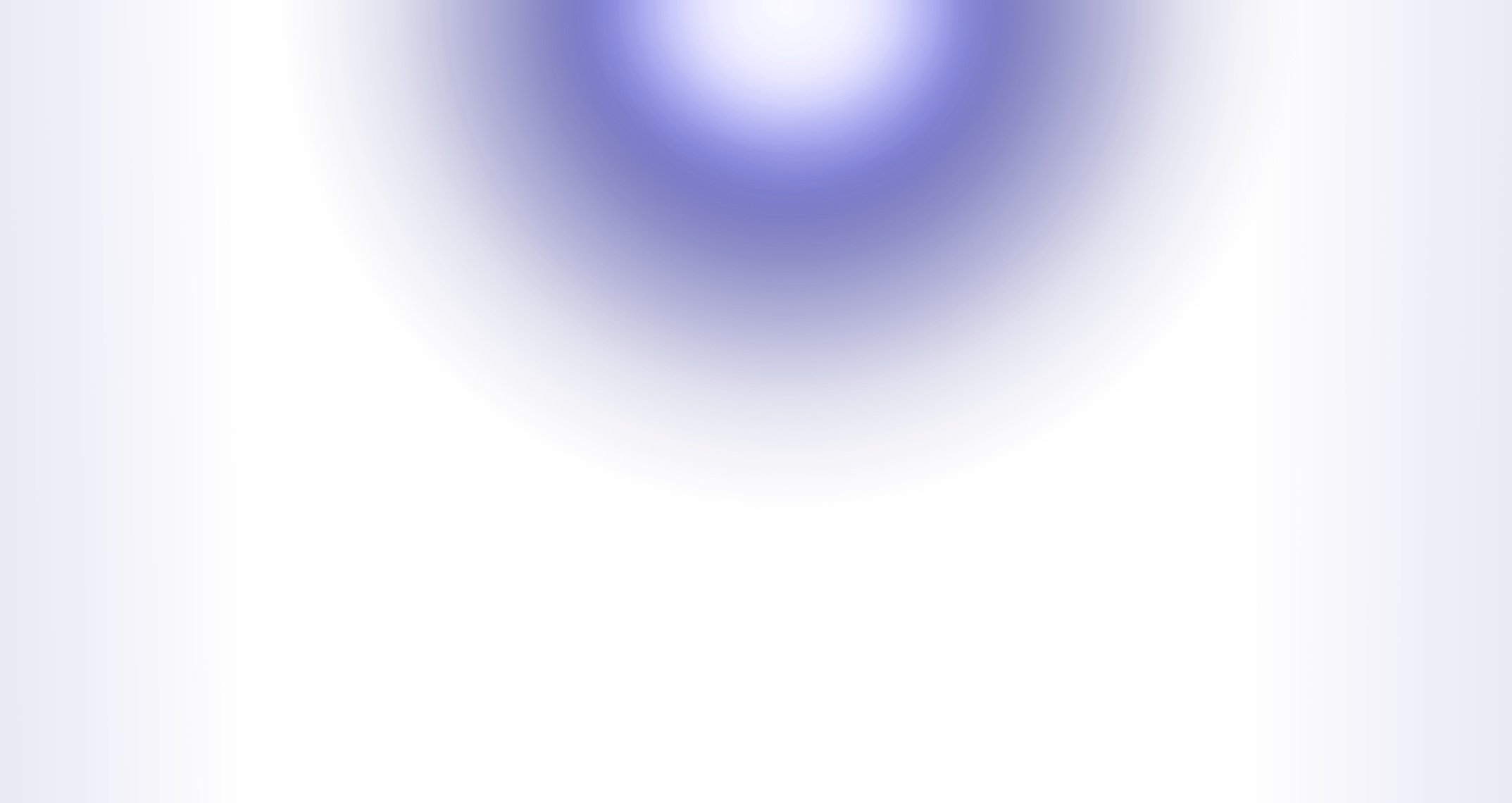
blog
FAQ

Visit my Substack: Hive Being
Visit my Substack: Hive Being

Don’t let anyone tell you that real life is lacking in poetic interest. This is exactly what the poet is for: he has the mind and the imagination to find something of interest in everyday things. Real life supplies the motifs, the points that need to be said—the actual heart of the matter; but it is the poet’s job to fashion it all into a beautiful, animated whole. You are familiar with Fürnstein, the so-called “nature poet”? He has written a poem about growing hops, and you couldn’t imagine anything nicer. I have now asked him to write some poems celebrating the work of skilled artisans, in particular weavers, and I am quite sure he will succeed; he has lived among such people from an early age, he knows the subject inside out, and will be in full command of his material. That is the advantage of small works: you need only choose subjects that you know and have at your command. With a longer poetic work, however, this is not possible. There is no way around it: all the different threads that tie the whole thing together, and are woven into the design, have to be shown in accurate detail. Young people only have a one-sided view of things, whereas a longer work requires a multiplicity of viewpoints—and that’s where they come unstuck.—Goethe (Conversations with Eckermann)
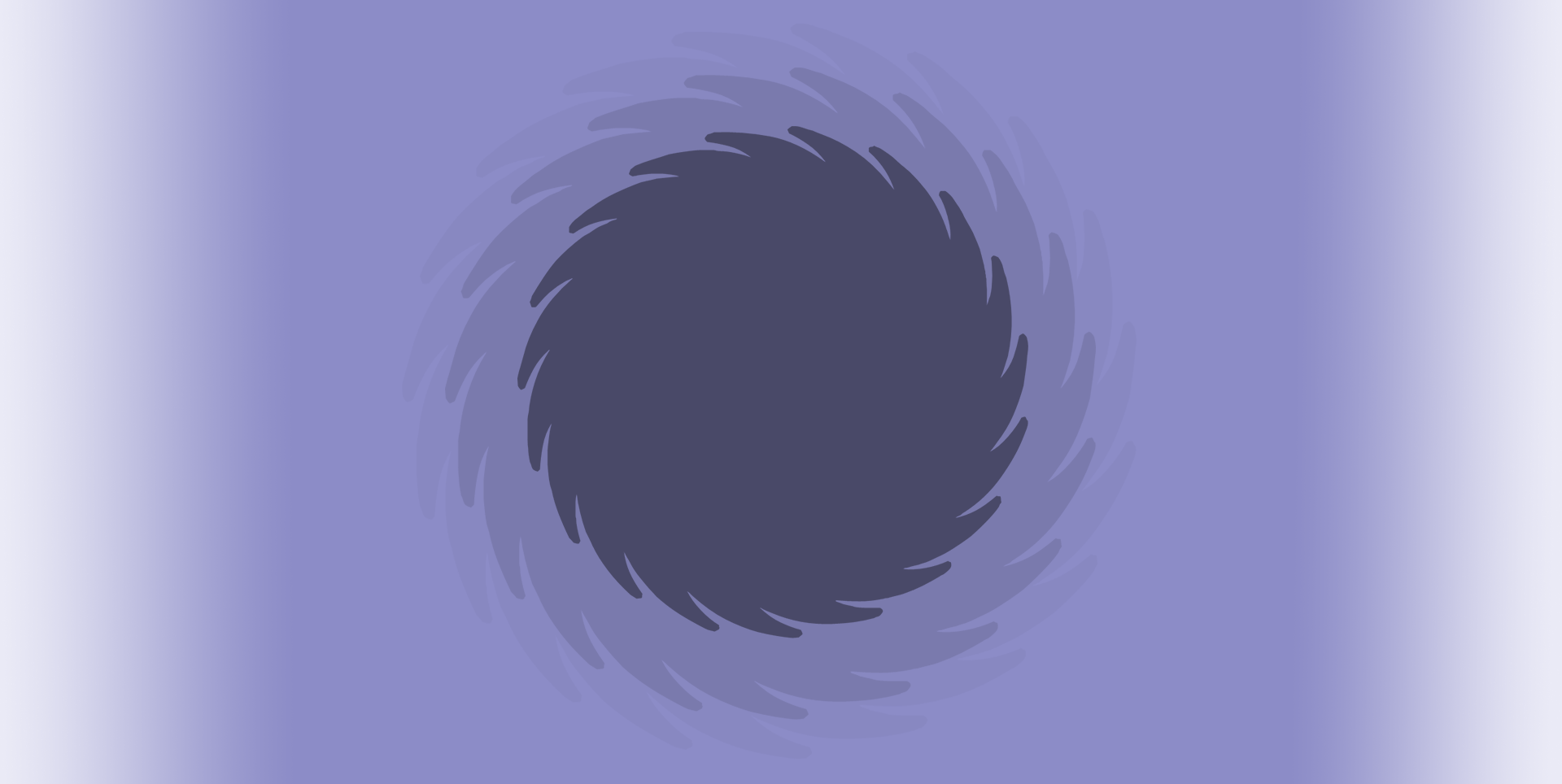
Featured Blog Posts
have appeared last night—
all those met along the way?
























